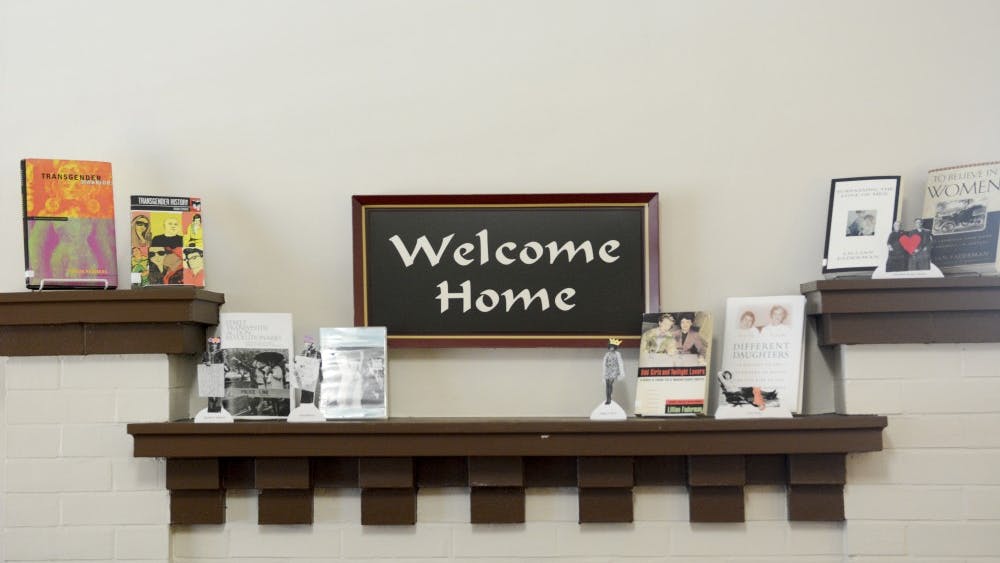Searching through the thousands of files in the IU Archive, you may stumble upon a little-known folder marked “Alumni-Infamous.” Filled with newspaper articles, web printouts, and notes from IU faculty and staff, the folder gives a look into parts of IU’s history that aren’t regularly bragged about.
The University is lucky to boast a long list of successful and famous alumni, but there are some who once walked the paths of campus whose actions didn’t win them notoriety as distinguished former students.
These are not all the IU students listed in that folder, but these are the ones who have truly earned the title of infamous Hoosiers.
The radicals
William Harris, Angela (DeAngelis) Atwood, and Emily (Schwartz) Harris were probably seen as typical students when they attended IU in the late 1960s. Just a few years after leaving their Hoosier roots, though, the three became founding members of the Symbionese Liberation Army, were linked to a number of crimes including murder and were the kidnappers of actress and newspaper heiress Patty Hearst.
While on campus, Emily was known as a straight-A student and an active member of her sorority, Chi Omega. It was through the greek system that Emily met her future husband, William, a member of Sigma Alpha Epsilon.
Emily was enrolled on the Bloomington campus from 1965 to 1969, graduating with an English degree. After graduating, she briefly taught at Binford Junior High.
William attended IU on and off from 1963 to 1970, graduating with a degree in education and speech. He then obtained a master’s degree in education at IU from 1971 to 1973. William attended IU after a combat-free tour in Vietnam, joining the group Vietnam Veterans Against War once on campus. William was reportedly very involved in the anti-war movement.
Angela, who was active in the theater department and played Perdita in “The Winter’s Tale,” also met her husband, Gary Atwood, at IU. The Atwoods were married in Beck Chapel on May 8, 1971, a year after graduating. Angela was enrolled from 1966 to 1970 and graduated with a degree in education.
The Atwood’s marriage didn’t last long. In June 1973, Angela divorced Gary, joining Emily and William Harris in Berkeley, Calif. While in California, the three became involved with the Black Cultural Association, a group that educated prisoners at the California Medical Facility at Vacaville, a psychiatric prison. It was through that organization that they met the other founding members of the SLA. The SLA was founded to “unite all oppressed people into a fighting force and to destroy the system of the capitalist state and all its value systems.”
The SLA’s acts of domestic terrorism started with the killing of an Oakland, Calif., school official and quickly led to the high-profile kidnapping of Patty Hearst in February 1974. Only two months later, in April, a tape was released by the SLA with Patty saying she had joined the group’s efforts. About 12 days later, Patty was seen on surveillance robbing a bank with the other members of the SLA.
On May 17, 1974, Los Angeles police surrounded the SLA safe house, and six members, including Angela, were killed in the shootout that ensued. William and Emily were able to escape and were on the run with Patty and new SLA members for more than a year.
On April 21, 1975, while robbing another California bank, SLA members shot and killed 42-year-old Myrna Opsahl with a shotgun. Myrna was at the bank depositing a church collection. The SLA remained at large for another five months before finally being caught and arrested in September 1975.
William and Emily served eight years in prison but just for the kidnapping of Patty. At the time, the SLA could not be linked to the murder of Myrna because they wore masks during the robbery. After being released in 1983, Emily divorced William and reportedly became a computer programmer.
After more than 25 years of no one being charged with Myrna’s murder, new forensic technology allowed the FBI to link shotgun shells removed from the body to those found in an SLA hideout.
Patty was granted immunity for testifying against her former companions, and in 2002 William and Emily, along with three other SLA members, pleaded guilty to second-degree murder. William received a seven-year sentence and Emily received eight.
Patty put the entire blame of the murder on Emily. In her autobiography, “Every Secret Thing,” Patty said after the murder Emily said, “Oh, she’s dead, but it doesn’t really matter. She was a bourgeois pig anyway. Her husband is a doctor."
Emily was released after her supporters collected the $1,000,000 bail. William and now Emily Montague are still alive and no longer serving prison time.
The serial killer
There isn’t much known about Herbert Baumeister’s time at IU. He studied anatomy and attended IU on the Blooomington and Indianapolis campuses from 1965-70, but never obtained a degree.
Herbert’s life after IU, from the outside, was a model of the American dream. He married in 1971, had three kids, and founded the successful Indianapolis thrift store chain Sav-A-Lot. But under the family man, unknown to even his wife, the notorious Hoosier would soon be revealed.
It all started in the early 1990s when investigators from the Marion County Sheriff’s Department and Indianapolis Police Department began looking into the disappearances of gay men in the area. The first big lead came in 1993 when a man contacted investigators saying he met someone named Brian Smart in a gay bar who tried to kill him. The man reported that he followed Brian back to his house where they engaged in autoerotic axphixiation, but Brian started to take things too far. The man said he believed Brian had also killed one of his friends.
Two years passed before Brian was seen again. But in November 1995, police were supplied a license plate number by the same man who spotted Brian before. From this it was discovered Brian was actually Herbert.
Police informed Herbert he was a suspect in the disappearances, but without enough evidence they were unable to obtain a search warrant. As time passed, Herbert’s wife, Julie, became more and more wary of her husband’s mood swings and erratic behavior. She later told police her son had found a skull and bones on the property, but Herbert told them it was an old skeleton his father had kept.
In June 1996, Julie filed for divorce and granted police permission to search the 18-acre property in Westfield, Ind., named Fox Hollow Farm. Investigators waited until Herbert was on vacation, and during their search they discovered the remains of 11 men. Only eight could be identified. Herbert escaped to Ontario, where he committed suicide. He left behind a note that listed his failing marriage and business as his reason for killing himself. He never confessed to the murders.
The bodies of nine more men discovered in rural areas along I-70 between Columbus, Ohio, and Indianapolis were linked to Herbert after Julie informed investigators her husband made almost 100 trips to Ohio for what he said were business trips.
The cult leader
For the future leader of a mass cult, James “Jim” Jones’ time at IU was mostly spent alone. He never declared a major while on campus but was registered as a student from 1948 to 1951, 1952 to 1953 and then again in 1959. He never completed an undergraduate degree from IU, but he eventually finished an education degree from Butler University.
It was during his hiatus from school that he founded his future radical cult, the People’s Temple Christian Church Full Gospel. Eventually, Jim felt there were anti-minority feelings in Indianapolis, which was against the loving values he preached. So in 1965 he moved the church to Ukiah, Calif. In 1973, the church once again moved to Jonestown, Guyana, in hopes of making a utopian settlement.
The “utopia” only lasted until 1978 when Jim led 914 people to commit mass suicide by a cyanide-laced fruit drink. The bodies of 638 adults and 267 children were found at the compound.
Jim also ordered U.S. Rep. Leo J. Ryan and four others investigating the church to be gunned down in Guyana while trying to escape. Anyone who resisted suicide was shot or injected with the poison.
Jim’s freshman year roommate from IU, Kenneth Lemons, said in an Indiana Daily Student article published days after the mass suicide that Jim had no friends in the dormitory, and he wanted it that way.
In a Herald-Times article, Kenneth said he remembered Jim showing radical religious and political views while at IU. He also told of an instance where Jim repeatedly stabbed him with a hatpin through the mattress while Kenneth was on the top bunk in their room.
“He considered himself above everyone else and pored over the Bible, often rambling about his religious philosophies,” Kenneth said in the Herald-Times article.
Notorious alumni
The radicals, the cult leader, the serial killer — all are former Hoosiers.

Get stories like this in your inbox
Subscribe





